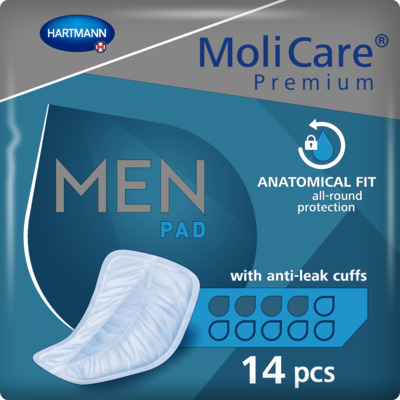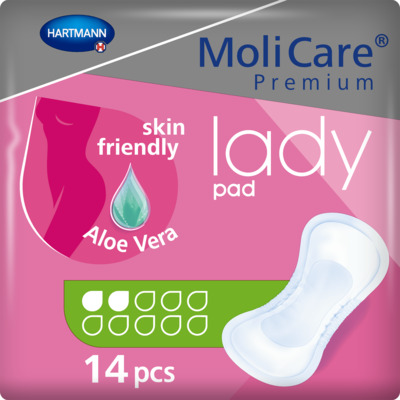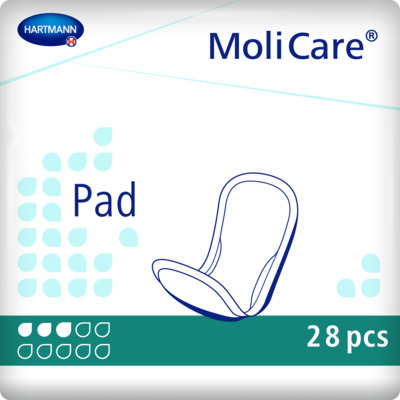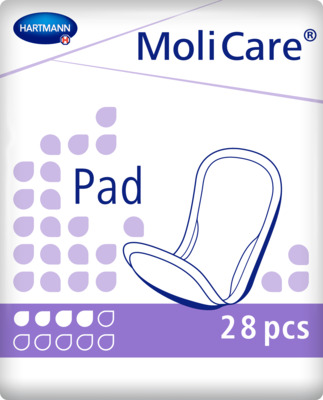Incontinence Advice
How To Handle Incontinence After Cancer
Having bladder or bowel cancer can be an emotionally and physically stressful time, and it can lead to incontinence. In this article, you will learn about the complexities of incontinence following cancer and explore its causes, impact, and strategies to manage it. It is important to recognise that incontinence is a common and manageable issue, and there are treatments and strategies to help individuals manage the condition effectively and regain confidence and control.

Symptoms of Bladder Cancer
Bladder cancer often presents itself with blood in the urine (known as haematuria) which can range from visible blood to microscopic amounts only detectable through medical tests. Early-stage bladder cancer typically causes bleeding without pain, while advanced stages may lead to painful urination. Additional symptoms include frequent urination, a burning sensation during urination, difficulty starting or maintaining urine flow, a weak stream, and in some cases, an inability to urinate.
Urinary incontinence can be a symptom of bladder cancer, often overshadowed by more common urinary issues associated with ageing. It's crucial that any new or changing urinary symptoms be evaluated to exclude or diagnose bladder cancer.
Diagnosis of Bladder Cancer
Diagnosing bladder cancer involves various tests and procedures. A cystoscopy is a common diagnostic tool where a cystoscope is inserted into the urethra to visually inspect the bladder and urethra for signs of cancer. During this procedure, small equipment can be passed down the cystoscope to remove any cancer found in the bladder, this is known as a transurethral resection of bladder tumour (TURBT). Any tumours or other tissue removed can be sent to a lab for closer examination.
Non-invasive tests, such as urine cytology, analyse urine samples for cancer cells. There are also imaging tests, such as CT urograms, that can provide detailed visuals of the urinary tract, aiding in the cancer detection process.
Moreover, treatments for bladder cancer, such as surgery, radiation, chemotherapy, and immunotherapy, can all contribute to incontinence. Radiation can lead to urethral damage, causing dryness and thinning of tissue, while chemotherapy may induce cystitis and neurotoxic effects, impairing bladder and urethral function. The combination of these treatments, especially in older patients, heightens the risk of incontinence, underscoring the importance of professional management and support for those affected.
The shock of a cancer diagnosis can lead to a rollercoaster of emotions, and the stress can affect mental and physical health. This emotional fluctuation may lead to depression, characterised by persistent sadness, loss of interest in enjoyable activities, and a sense of hopelessness. If these feelings arise, it's crucial to consult with a healthcare provider, as depression can be managed with treatments like antidepressants and cognitive behavioural therapy (CBT).
Continence and Bladder Surgery
Following a diagnosis of bladder cancer, surgery is sometimes required to remove the bladder altogether. This is called a cystectomy. After surgery, many patients face the necessity of urinary diversion.
Following this, people do not pass urine in the same way as before. Instead, a urostomy is created, which is an opening on the abdomen, and a bag (or pouch) is attached over it to collect the urine. The bag needs to be emptied when it becomes full, like the bladder did. This is a surgical procedure to create a new urine passage using an internal pouch. This comes into play especially when the bladder is severely damaged by radiation or needs to be removed.
The choice of urinary diversion depends on individual circumstances and medical advice, ensuring the selected method aligns with the patient’s lifestyle and health needs.
Sometimes a continent urinary diversion is created which is an internal pouch connected to an opening on the abdomen that is emptied using a tube (catheter).

Bladder Reconstruction
A new bladder (neobladder) can sometimes be constructed using a section of bowel. Over time, people can learn to control the new bladder in the same way they did before. However, this can be challenging, and sometimes self-catheterisation (a tube passed into the urethra) is required to empty the bladder to prevent accidental leakage, especially at night.
Patients need to learn to control the neobladder through pelvic muscle manipulation, and it may lack the natural nerves of the original bladder.
Navigating Sexual Health After Cancer
Sexual dysfunction is a common concern post-cancer treatment, with various solutions based on the individual’s specific needs.
Erectile Dysfunction in Men
Following procedures like radical cystectomy, men may experience erectile dysfunction. Treatment options include phosphodiesterase type 5 inhibitors (PDE5) , which enhances blood flow to the penis, sometimes used in conjunction with a vacuum pump. This pump helps to induce an erection by creating a vacuum around the penis, which is then maintained with a ring placed at its base.
Alternatively, try a plant based diet that aids sexual health in men affected by prostate cancer.
Vaginal Changes in Women
Women may experience vaginal narrowing and shortening after surgery, which can make sexual intercourse painful. Hormonal creams and vaginal dilators are common treatments. Dilators, used regularly, can gradually stretch the vagina and make it more flexible, improving comfort during sex. Open communication with healthcare providers about these intimate issues is vital for finding appropriate solutions and easing the emotional burden associated with these physical changes.
Regular sexual activity can also help alleviate discomfort, although it might take time for emotional readiness for intimacy to return. Both men and women are encouraged to discuss their sexual health concerns with their partners and medical teams to ensure effective management and support.

Treatment and Lifestyle for Incontinence Management
Making lifestyle adjustments can play a significant role in improving continence and overall quality of life. Some recommended lifestyle adjustments are as follows:
Modifying Diet and Fluid Intake
Adjustments in diet and fluid intake can play a significant role in reducing symptoms. Limiting foods and drinks that irritate the bladder and bowels, including caffeine, alcohol, carbonated beverages, citrus fruits, and high-sugar foods can decrease urine production and bladder irritation.
It is essential to find a balance in fluid intake - enough to stay hydrated but not so much that it exacerbates incontinence. Aim for clear to light yellow urine as an indicator of proper hydration. (Learn more in our guide on what the colour of your urine could mean). Reducing fluid intake in the hours before bedtime can help minimise nocturnal enuresis.
Establish A Toilet Routine
Establishing a routine for toilet visits can prevent urgency and leaks, and emptying the bladder before activities that increase abdominal pressure, such as exercise or heavy lifting, can prevent leakage. Aiming for a toilet break every 2 to 4 hours is advisable, adjusting as needed to suit your body's rhythm. For those with frequent urges, bladder training techniques, such as gradually extending the time between bathroom visits, can be beneficial. For more information, browse our guide on how many times a day you should wee.
Consider Incontinence Products
Utilising continence pads or protective underwear can provide security and prevent leaks from affecting clothing. For nighttime protection, consider using protective bed sheets. These measures can offer peace of mind and improve sleep quality.
Quit Smoking
Quitting smoking is important for overall health, but quitting can also keep the bladder system healthy, as smoking can aggravate incontinence by causing cough-induced stress on the pelvic floor muscles, and it can irritate the bladder lining.
Pelvic Floor Muscle Training
Pelvic floor exercises, or Kegel exercises, strengthen the muscles that control urination. These exercises can be performed discreetly and are effective in improving incontinence symptoms. Professional guidance from a physical therapist specialising in pelvic floor rehabilitation can optimise the training regimen. Learn to perform them with our guides on strengthening the pelvic floor for women, and kegel exercises for men.
Maintaining a Healthy Weight
Excess weight can increase pressure on the bladder and pelvic floor muscles, intensifying incontinence symptoms. A balanced diet and regular exercise can help in achieving and maintaining a healthy weight, reducing the impact of incontinence. For those middle aged and above, you can find more information in our healthy lifestyle for over 50s article.

Alleviate Incontinence After Cancer
In conclusion, managing incontinence after cancer involves understanding the emotional, physical, and lifestyle impacts of the condition. Strategies such as adapting your diet, fluid intake, and establishing a routine urination schedule can alleviate symptoms. Utilising incontinence products, quitting smoking, performing pelvic floor exercises, and maintaining a healthy weight are key to improving quality of life and regaining control. With the right support, resources, and strategies, individuals can learn to manage symptoms, reclaim control over their lives, and thrive beyond cancer.
FAQs
What type of cancer causes incontinence?
Prostate, bladder and colorectal cancers can cause incontinence due to their impact on the urinary and bowel systems. Brain or spinal cord cancers can also lead to incontinence, as they can affect the nerves that control the bladder and the muscles surrounding it.
Why can't I hold my pee all of a sudden?
Sudden urinary incontinence can be caused by urinary tract infections, bladder irritants, medication side effects, or neurological disorders. It is important to consult a healthcare professional for advice about any sudden changes that occur.
Is faecal incontinence a symptom of bowel cancer?
Yes, incontinence can be a symptom of bowel cancer, especially if the tumour affects the bowel's ability to function properly.
NHS. (2007). Cystoscopy. [online] Available at: https://www.nhs.uk/conditions/cystoscopy/ [accessed 04/04/24]
Cancer Research. (2022) Transurethral Removal of Bladder Tumour (TURBT) [online] Available at: https://www.cancerresearchuk.org/about-cancer/bladder-cancer/treatment/non-muscle-invasive/trans-urethral-removal-tumour [accessed 04/04/24]
Cancer Research UK. (2020) Continent Urinary Diversion (Internal Pouch) [online] Available at: https://www.cancerresearchuk.org/about-cancer/bladder-cancer/treatment/invasive/surgery/continent-urinary-diversion [accessed 04/04/24]
Cancer Research UK. (2017) Urostomy (ileal conduit) [online] Available at: https://www.cancerresearchuk.org/about-cancer/bladder-cancer/treatment/invasive/surgery/urostomy-ileal-conduit [accessed 04/04/24]
Pulmonary Hypertension Association (PHAUK) (2021) Phosphodiesterase 5 inhibitors. [online] Available at: https://www.phauk.org/treatment-for-pulmonary-hypertension/oral-therapies/phosphodiesterase-5-inhibitors/ [accessed 04/04/24]

MoliCare® Premium Men Pad 4 Drops
<h2>Comfortable and absorbent</h2> <p>Why MoliCare for men? Hers are some of the key features of the MoliCare® Premium Men Pads from Hartmann:</p> <ul> <li>Discreet and comfortable</li> <li>Fits the male physique</li> <li>3-layer absorbent core</li> <li>Fast-absorbing system</li> <li>Anti-leakage cuffs</li> <li>Odour neutralisers</li> <li>Wide adhesive strip</li> <li>Skin-friendly</li> </ul> <p>With an affordable price and great quality guarantee, you cannot regret choosing MoliCare® Premium Men Pad 4 drops, equipped with anti-leak cuffs, and 14 pieces per bag.</p> <h2>Slim and discreet under clothing</h2> <p>MoliCare® Premium MEN Pads offer reliable support for men dealing with bladder weakness. Whether it's stress incontinence or urge incontinence, these pads for men are designed to provide a discreet and quick solution on the go. Simply place the pad before applying your underwear and secure it with the adhesive strip for worry-free protection. MoliCare® Premium MEN Pads offer full coverage for men facing very light to moderate bladder weakness.</p> <h2>Leakage protection for men</h2> <p>MoliCare® understands that each individual's incontinence needs are unique. That's why our incontinence products, including MoliCare® Premium MEN Pads, are available in different absorbency levels. You can find the perfect fit and protection for your specific requirements.</p> <h2>Reliable and soft on the skin</h2> <p>Our body-shaped absorbent pads are designed to deliver dependable and skin-friendly incontinence protection every day. Experience discreet comfort with the soft, cotton-like materials and the added benefit of an odour neutraliser, ensuring you feel fresh and confident throughout the day.</p> <h2>Fast delivery to your home</h2> <p>At HARTMANN Direct, we ensure a fast delivery service for all our products. Enjoy free delivery on orders over £50, making it convenient and hassle-free to receive the incontinence products you need. Our dedicated customer care team is here to discuss your incontinence product needs and answer any questions you may have. Call us today on 0800 028 9470 to experience the comfort and confidence that MoliCare® Premium MEN Pads can provide.</p>
MoliCare® Premium Lady Pad 2 Drops
<h2>Skin Friendly Pant Liners</h2> <p>For women that experience slight incontinence and bladder weakness, across different age groups, it can be a challenge to find the right bladder weakness product that is easy to apply and wear without the worry of potential leakages. Fortunately, we understand this approach, hence why we are happy to offer our MoliCare® Premium Lady Pad 2 drops, that is skin-friendly, Aloe Vera applied, and comes with 14 liners per bag.</p> <h2>Slim and discreet liners</h2> <p>Whether dealing with stress incontinence or urge incontinence, these panty liners offer a discreet and easy solution on the go. Simply place the pad in your underwear and secure it with the adhesive strip for all-round protection. Available in different absorbency levels, MoliCare® bladder weakness products cater to all levels of bladder weakness, ensuring secure care.</p> <h2>Control Bladder Weakness</h2> <p>Enjoy the benefits of these body-shaped absorbent panty liners, designed for women with bladder weakness. The pads offer discreet, reliable protection with features including odour control and fast absorption.</p> <p>With a wide adhesive strip, you can comfortably fix the pad in your regular underwear, providing secure and comfortable fixation. The pads are skin-friendly, featuring soft, breathable materials, including foam cuffs, and a top sheet treated with Aloe Vera.</p> <p>Keeping your skin healthy is a priority, which is why MoliCare® Premium Lady Pads have a skin-neutral pH value of 5.5 and an antibacterial finish. They are also dermatologically tested, offering peace of mind.</p> <h2>Buy pant liners online</h2> <p>Never worry about running out with our convenient order service and fast delivery direct to your door. Enjoy free shipping on orders over £50.</p> <p>If you need assistance, our professional customer service team is here to support you in choosing the right product. Reach out to us today at 0800 028 9470 and experience the comfort and reliability of MoliCare® Premium Lady Pads.</p>
MoliCare Pad 3 Drops
<h2>Incontinence pads for men and women</h2> <p>Protect yourself against slight bladder weakness with the MoliCare® Pad 3 drops. Suitable for men and women, offering an ideal solution to regain control and live your active life without interruptions. Slimline, discreet, and contoured to fit your body, these incontinence pads ensure a comfortable and barely noticeable feel, providing exceptional dryness and protection for slight incontinence.</p> <p>Crafted with soft, skin-friendly fabric and a polyester backsheet, these incontinence pads ensure you can confidently go about your day, secure against minor leaks. The wide adhesive fixing strip keeps the pad securely in place, while the super absorbent core wicks moisture away from your skin. The elastic anti-leak edging adds an extra layer of reassurance, and odour neutraliser keeps you feeling fresh and confident. With the MoliCare® Pad 3 drops, you no longer need to let slight or occasional incontinence hold you back from enjoying life to the fullest. Simply adhere the pad to your underwear, and you will barely feel the difference.</p> <h2>Price match promise</h2> <p>Experience convenience with our fast delivery service, bringing your chosen products directly to your door. At HARTMANN Direct, we offer a price match promise and free delivery for orders over £50, making sure you receive both quality and value.</p> <p>If you need further assistance, our customer care team is here to help. Give us a call today at 0800 028 9470, and we'll find the perfect incontinence product tailored to your needs. Take charge of your life with the reliable and comfortable protection of MoliCare® Pad 3 drops. Say goodbye to worries and hello to an active and confident lifestyle.</p>
